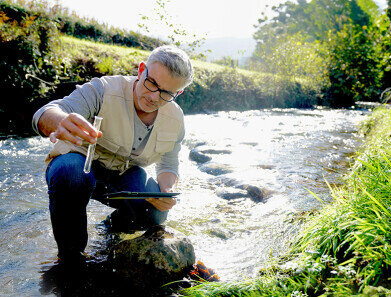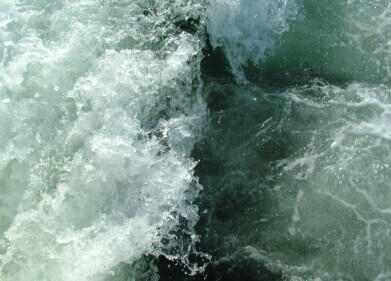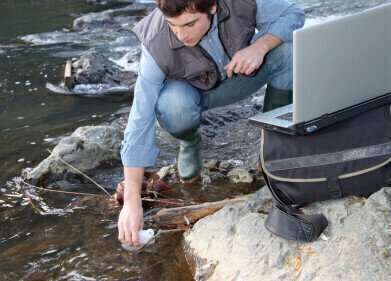PFAS Analysis
Miniature sensors, offer rapid on-site measurement of traces of ‘forever chemicals’, at values below European Union threshold
Apr 22 2024
Grapheal, a deep-tech startup developing specialised biosensors, and the EDYTEM laboratory, a joint research unit between France’s Center for Scientific Research (CNRS) and Savoie Mont Blanc University, announce the fine-tuning of a portable device for monitoring water-borne PFAS pollution. Made up of miniature sensors, this device provides in situ direct measurements of pollution linked to per- and polyfluoroalkyl substances (PFAS) in water.
Grapheal and EDYTEM co-developed the portable water monitoring device through their joint laboratory ‘Fluorograph’, under the ‘LabCom’ program supported by France’s National Research Agency.
PFAS are a class of around 12,000 chemicals which, due to their unique properties, are now being used in a huge number of applications and devices. A major mapping project showed that they can be found at millions of sites throughout Europe. As a result of their extraordinary persistence, toxicity and (bio)accumulation, PFAS are now described as ‘forever chemicals’. They cause major health problems and environmental damage. Consequently, detecting trace amounts of PFAS and monitoring them has become a global priority. Evaluating PFAS contamination of water sources is currently a highly complex matter, requiring laboratory testing with the use of sophisticated and costly equipment.
To address this, the Fluorograph laboratory developed a miniature electronic sensor, the size of a credit card, that can conduct on-site sampling tests, making contamination mapping a much simpler task. Initial test results using these new sensors to detect one of the most common PFAS compounds, PFOA (perfluorooctanoic acid), in water, showed detection limits in the region of 300 ng/L, below the European Union regulatory maximum of 500 ng/L of total PFAS in drinking water.
“The high sensitivity and ease of use of the Fluorograph device allow for quantitative detection of PFAS in situand help meet the pressing need to map polluted areas and monitor them over time,” said Guy Royal, researcher at EDYTEM. “It’s a valuable tool for regulatory organisations, field researchers and other staff with responsibility for water management.”
“As it is produced with printed electronics and uses a carbon sensor, Flurograph’s device has a very low environmental impact,” said Vincent Bouchiat, CEO of Grapheal. “On-site analysis is made easier, making it possible to increase the density of tests while significantly reducing the financial burden associated with frequent water analyses. In this context, Grapheal is looking for industrial partners to support the industrialisation of its solution and the increase in production volume.”
These initial results have established the Fluorograph joint laboratory as a leader in environmental monitoring solutions, able to rise to the emerging challenges in water quality and the fight against pollution. The laboratory’s electrochemical device represents a major step forward for environmental science and public health. By placing the emphasis on research, sustainability and the implementation of environmentally responsible nanotechnologies, it could have a positive impact on ecosystems and communities worldwide.
Digital Edition
AET 28.2 April/May 2024
May 2024
Business News - Teledyne Marine expands with the acquisition of Valeport - Signal partners with gas analysis experts in Korea Air Monitoring - Continuous Fine Particulate Emission Monitor...
View all digital editions
Events
Jul 30 2024 Jakarta, Indonesia
China Energy Summit & Exhibition
Jul 31 2024 Beijing, China
2024 Beijing International Coal & Mining Exhibition
Aug 07 2024 Beijing, China
IWA World Water Congress & Exhibition
Aug 11 2024 Toronto, Canada
Aug 25 2024 Stockholm, Sweden and online











.jpg)








